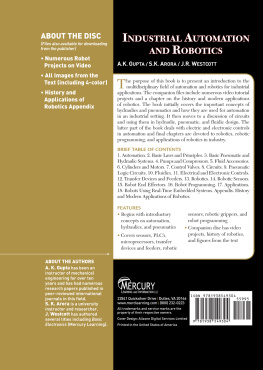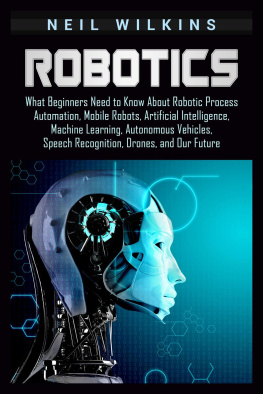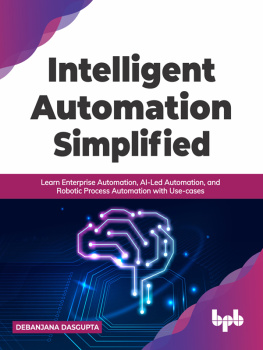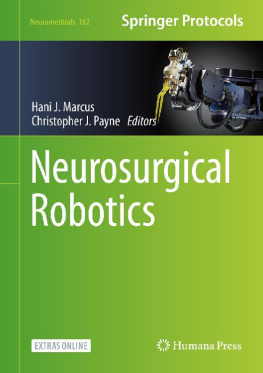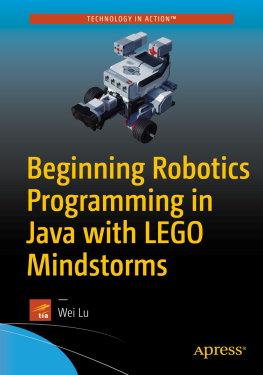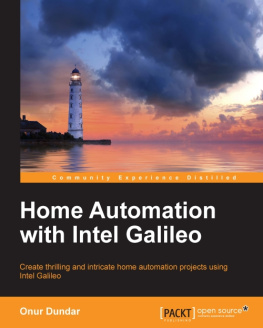
LICENSE, DISCLAIMER OF LIABILITY, AND LIMITED WARRANTY
By purchasing or using this book and disc (the Work), you agree that this license grants permission to use the contents contained herein, including the disc, but does not give you the right of ownership to any of the textual content in the book / disc or ownership to any of the information or products contained in it. This license does not permit uploading of the Work onto the Internet or on a network (of any kind) without the written consent of the Publisher. Duplication or dissemination of any text, code, simulations, images, etc. contained herein is limited to and subject to licensing terms for the respective products, and permission must be obtained from the Publisher or the owner of the content, etc., in order to reproduce or network any portion of the textual material (in any media) that is contained in the Work.
MERCURY LEARNING AND INFORMATION (MLI or the Publisher) and anyone involved in the creation, writing, or production of the companion disc, accompanying algorithms, code, or computer programs (the software), and any accompanying Web site or software of the Work, cannot and do not warrant the performance or results that might be obtained by using the contents of the Work. The author, developers, and the Publisher have used their best efforts to insure the accuracy and functionality of the textual material and/or programs contained in this package; we, however, make no warranty of any kind, express or implied, regarding the performance of these contents or programs. The Work is sold as is without warranty (except for defective materials used in manufacturing the book or due to faulty workmanship).
The author, developers, and the publisher of any accompanying content, and anyone involved in the composition, production, and manufacturing of this work will not be liable for damages of any kind arising out of the use of (or the inability to use) the algorithms, source code, computer programs, or textual material contained in this publication. This includes, but is not limited to, loss of revenue or profit, or other incidental, physical, or consequential damages arising out of the use of this Work.
Companion files that appear on the disc for this book can be downloaded from an FTP site by writing to the publisher at .
The sole remedy in the event of a claim of any kind is expressly limited to replacement of the book, and /or disc, and only at the discretion of the Publisher. The use of implied warranty and certain exclusions vary from state to state, and might not apply to the purchaser of this product.

Copyright 2017 by MERCURY LEARNING AND INFORMATION LLC. All rights reserved.
Portions of this book appeared in Industrial Automation and Robotics 3/E
(978-8-131805-92-3). Copyright 2013. Laxmi Publications Pvt. Ltd.
This publication, portions of it, or any accompanying software may not be reproduced in any way, stored in a retrieval system of any type, or transmitted by any means, media, electronic display or mechanical display, including, but not limited to, photocopy, recording, Internet postings, or scanning, without prior permission in writing from the publisher.
Publisher: David Pallai
MERCURY LEARNING AND INFORMATION
22841 Quicksilver Drive
Dulles, VA 20166
www.merclearning.com
1-800-232-0223
A. K. Gupta/S. K. Arora/J. R. Westcott. Industrial Automation and Robotics.
ISBN: 978-1-938549-30-4
The material in and the videos on the companion disc appear and were adapted from Real-Time Embedded Components and Systems with Linux and RTOS by S. Siewert and J. Pratt. Mercury Learning and Information, 2016. ISBN: 978-1-942270-04-1.
The publisher recognizes and respects all marks used by companies, manufacturers, and developers as a means to distinguish their products. All brand names and product names mentioned in this book are trademarks or service marks of their respective companies. Any omission or misuse (of any kind) of service marks or trademarks, etc. is not an attempt to infringe on the property of others.
Library of Congress Control Number: 2016912251
161718321 Printed in the USA on acid-free paper.
Our titles are available for adoption, license, or bulk purchase by institutions, corporations, etc. For additional information, please contact the Customer Service Dept. at 800-232-0223(toll free).
All of our titles are available in digital format at . The sole obligation of MERCURY LEARNING AND INFORMATION to the purchaser is to replace the disc, based on defective materials or faulty workmanship, but not based on the operation or functionality of the product.
CONTENTS
T he purpose of this book is to present an introduction to the multidisciplinary field of automation and robotics for industrial applications. The book initially covers the important concepts of hydraulics and pneumatics and how they are used for automation in an industrial setting. It then moves to a discussion of circuits and using them in hydraulic, pneumatic, and fluidic design. The latter part of the book deals with electric and electronic controls in automation and final chapters are devoted to robotics, robotic programming, and applications of robotics in industry. A companion disc is included with applications and videos.
Companion Files
Companion files (videos, lab projects, and figures from the book) for this title are available on the companion disc or by contacting the publisher at .
Acknowledgments
The material in and the videos on the companion disc appear in and were adapted from Real-Time Embedded Components and Systems with Linux and RTOS by S. Siewert and J. Pratt. Mercury Learning and Information, 2016. ISBN: 978-1-942270-04-1. I would like to thank Jen Blaney of Mercury Learning for her professional and patient assistance with this product, Sean Westcott for his input and support, and to dedicate this project to the truest friend, Sandy.
Jean Riescher Westcott
October 2016
The word automation comes from the Greek word automatos, meaning self-acting. The word automation was coined in the mid-1940s by the U.S. automobile industry to indicate the automatic handling of parts between production machines, together with their continuous processing at the machines. The advances in computers and control systems have extended the definition of automation. By the middle of the 20th century, automation had existed for many years on a small scale, using mechanical devices to automate the production of simply shaped items. However the concept only became truly practical with the addition of the computer, whose flexibility allowed it to drive almost any sort of task.
Automation can generally be defined as the process of following a predetermined sequence of operations with little or no human labor, using specialized equipment and devices that perform and control manufacturing processes. Automation in its full sense, is achieved through the use of a variety of devices, sensors, actuators, techniques, and equipment that are capable of observing the manufacturing process, making decisions concerning the changes that need to be made in the operation, and controlling all aspects of it.
OR
Automation is the process in industry where various production operations are converted from a manual process, to an automated or mechanized process.
Next page
